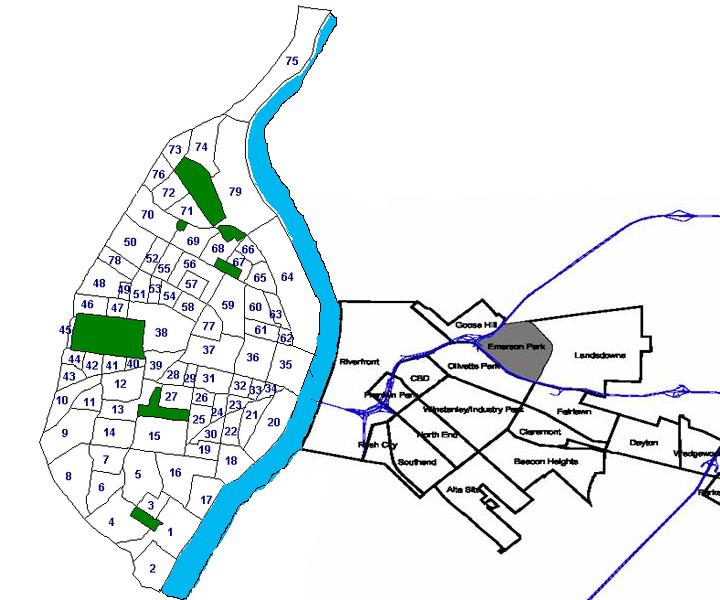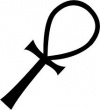Saint Louis: Difference between revisions
(→Crime) |
|||
| Line 105: | Line 105: | ||
== '''Crime''' == | == '''Crime''' == | ||
The St. Louis crime family, also known as the Giordano crime family, is an American Mafia crime family based in St. Louis, Missouri, United States. | |||
Historical Italian gangs in St. Louis | |||
The Green Ones — was a Sicilian gang led by Vito Giannola. On September 9, 1927 gang member Alfonse Palazzolo was murdered. Then on December 28, 1927 the leader of the gang Vito Giannola was murdered. The remaining members fled the city. | |||
The Russo Gang — was a splinter group of the Green Ones, led by Tony Russo, they were allies to Pillow gang leader Fresina. After the murders of Giannola and Palazzolo they fought with the Pillow gang. By 1928 the three remaining Russo brothers fled St. Louis. | |||
The Pillow Gang — was an Italian gang led by Pasquale Santino from 1911 till his murder in 1927. Carmelo Fresina took control of the gang, until he himself was murdered in 1931. The gang was then led by Thomas Buffa who became boss of the St. Louis Mafia family. In 1943, Buffa fled the city and was murdered in 1947 in Lodi, California. | |||
Prohibition era | |||
Mafia activity was recorded in St. Louis as early as the mid-1890s. By the early 1910s, the recognized Mafia boss in St. Louis was Dominick Giambrone. During the prohibition era in St. Louis, there were seven different ethnic gangs; the Green Ones, the Pillow Gang, the Egan's Rats, the Hogan Gang, the Russo Gang, the Shelton Gang and the Cuckoos all fighting to control illegal rackets in the city. The seven rival gangs continued fighting until the end of Prohibition. By this time, the various Mafia factions now functioned as one family. | |||
Giordano and the Detroit family | |||
After Tony Lopiparo's death, Anthony Giordano became boss and declared independence from the Kansas City crime family. In the 1970s, Giordano along with Detroit mobsters Anthony Joseph Zerilli and Michael Polizzi attempted to gain control of the Frontier Hotel and Casino in Las Vegas. They failed and all three men were convicted of conspiracy. In 1975, Giordano was sent to prison, his nephew Vincenzo Giammanco became the acting boss until Giordano was released in December 1977. On August 29, 1980, Giordano died from cancer in his St. Louis home. | |||
Trupiano era | |||
In 1982, Matthew Trupiano took over the family. He was a powerful boss and was president of Local 110 of the Laborers Union. Trupiano was charged with conducting an illegal gambling operation and with labor racketeering, including the embezzlement of union benefit funds. He was found guilty and sent to three years in prison in 1992. Trupiano died on October 22, 1997. | |||
Current status | |||
The St. Louis crime family has stayed under the radar of both local and federal authorities, who have been focused on organized crime that inflicts public violence. It is alleged that Anthony "Nino" Parrino, who was the boss of the St. Louis crime family since 1997 died on November 3, 2014. The last known underboss was Joseph Cammarata, he died in September 2013. | |||
Historical leadership | |||
Boss (official and acting) | |||
1912-1923 — Dominick Giambrone — fled; murdered, 1934. | |||
1923-1927 — Vito Giannola | |||
1927-1937 — Frank Agrusa | |||
1937-1943 — Thomas Buffa | |||
1943-1950 — Pasquale Miceli | |||
1950 — Vincent Chiapetta | |||
1950-1960 — Anthony "Tony Lap" Lopiparo — was the son of a St. Louis mobster, he died in 1960. | |||
1960-1980 — Anthony "Tony G." Giordano — as boss he declared independence from the Kansas City family. Imprisoned 1975-1977, he died on August 29, 1980 from cancer | |||
Acting 1975-1977 — Vincenzo "Jimmy" Giammanco — was Giordano's nephew | |||
1980-1982 — John "Johnny V." Vitale. — he died on June 5, 1982 | |||
1982-1997 — Matthew "Mike" Trupiano, Jr. — was Giordano's nephew from Detroit; he died in 1997 | |||
1997–2014 — Anthony "Nino" Parrino died November 3, 2014. | |||
Underboss | |||
1912-1923 — Vito Giannola — became boss. | |||
1923-1927 — Frank Agrusa — became boss. | |||
1927-1937 — Thomas Buffa — became boss. | |||
1937-1943 — Pasquale Miceli — became boss. | |||
1943-1950 — Vincent Chiapetta — became boss. | |||
1950-1980 — John "Johnny V." Vitale — semi-retired from 1960, afterly became boss. | |||
1980-2000s — Joseph "Uncle Joe" Cammarata — semi-retired, deceased in 2013. | |||
2000s-present — Vincent "Vince" Giordano | |||
Consigliere[edit] | |||
1950-1960 — Ralph "Shorty" Caleca — semi-retired, deceased in 1988. | |||
1960-1982 — Joseph Pisciotta — semi-retired, deceased in 2012. | |||
1982-1997 — Anthony "Nino" Parrino — became boss. | |||
1997–present — Giacomo "Jackie" Parrino | |||
Current family members | |||
==Administration== | |||
Boss Vacant | |||
Underboss Vincent "Vince" Giordano — Anthony Giordano's nephew. | |||
Consigliere Giacomo "Jackie" Parrino — Nino Parrino's relative. | |||
Capos | |||
Vincent "Shotgun Vinny" Cammarata — a capo in Greater St. Louis, nephew of Joseph Cammarata (died in 2013) active mainly in labor racketeering and bookmaking. | |||
Frank "Big Frank" Palozzolo — also St. Louis capo. | |||
Soldiers | |||
Fernando "Nondo" Bartolotta — made in 1981 with Frank Palazzolo and Matthew Trupiano. | |||
Antonio "Tonio" Lopiccolo — active East Side St. Louis. | |||
Philip "Philly" Palozzolo — Frank Palozzolo's brother. | |||
Joseph "Joe" Tocco — official in LIUANA Local 53. | |||
Angelo Copo — Sicilian zip. | |||
Benedetto Geremia — another zips and Copo's associate. | |||
Leo Pisciotta — Joe Pisciotta's relative. | |||
== '''Citizens of the City''' == | == '''Citizens of the City''' == | ||
Revision as of 21:59, 20 March 2015
- Western Alliance of Independent States Post 2027
Quote
"Every one soon or late comes round by Rome."---Robert Browning
Appearance
== Climate ==
St. Louis lies in the transitional zone between the humid continental climate type and the humid subtropical climate type, with neither large mountains nor large bodies of water to moderate its temperature. It is subject to both cold Arctic air and hot, humid tropical air from the Gulf of Mexico. The city has four distinct seasons. Spring is the wettest season and produces severe weather ranging from tornadoes to winter storms. Summers are hot and humid; temperatures of 90 °F (32 °C) or higher occur 43 days a year.
Fall is mild and sunny, with lower humidity and can produce intermittent bouts of heavy rainfall, with the first snow usually falling around December 4th. Winters can be brisk and stimulating, however extended periods of very cold temperatures are rare; high temperatures below freezing occur fewer than 25 days per year, on average. While each winter typically has at least one major snowstorm accumulating 4 inches or more, it typically rains more often than it snows during St. Louis winters, however, winter is the driest season. Winter storm systems, such as Alberta clippers and Panhandle hooks, can bring heavy freezing rain, ice pellets, and snowfall, typically followed by a few days of clear but very cold weather. Daily high temperatures during winter average about 45 degrees, however, so accumulated snow typically melts quickly. Along with much of the country, St. Louis' winters appear to be warming in recent decades. Over the last 20 winter seasons, 10 of those winters were among the top 20 warmest, but only 2 were among the top 20 coldest, as measured by number of heating degree days.
The average annual temperature recorded at nearby Lambert–St. Louis International Airport, is 57.1 °F (13.9 °C), and average precipitation is about 41.0 inches (1,040 mm). The daily average temperature in July is 80.0 °F (26.7 °C), while in January it is 31.8 °F (−0.1 °C), although this varies from year to year. Both 100 °F (38 °C) and 0 °F (−18 °C) temperatures can be seen on an average 2 or 3 days per year. The official record low is −22 °F (−30 °C) on January 5, 1884, although there were unofficial readings of −23 °F (−31 °C) on January 29, 1873; and the record high is 115 °F (46 °C) on July 14, 1954.[21] July 2012 was the hottest month in the 138-year recorded weather temperatures in St. Louis history starting in 1874, with an average daily temperature of 88.1 °F (31.2 °C).
Winter (December through February) is the driest season, with an average 7.5 in (191 mm) of precipitation. The average seasonal snowfall is 18.2 inches (46 cm). Given a typical 10:1 ratio of snow depth to water contained within the snow, this means that roughly 5.7 of the 7.5" in precipitation each winter is in the form of rain. Spring (March through May), is typically the wettest season, with 11.7 in (297 mm) of precipitation. Dry spells lasting one to two weeks are common during the growing seasons.
St. Louis has thunderstorms 48 days a year on average. Especially in the spring, these storms can often be severe, with high winds, large hail and tornadoes. Lying near the hotbed of the Tornado Alley, St. Louis is one of the metropolitan areas with most frequent tornadoes. The area has an extensive history of damaging tornadoes.
Some late autumns feature the warm weather known as Indian summer; some years see roses in bloom as late as early December.
Economy
History
Exploration and Louisiana before 1762
The history of St. Louis, Missouri began with the settlement of the St. Louis area by Native American mound builders who lived as part of the Mississippian culture from the 800s to the 1400s, followed by other migrating tribal groups. Starting in the late 1600s, French explorers arrived, and after the French and Indian War, a French trading company led by Pierre Laclede and Auguste Chouteau established the settlement of St. Louis in February 1764.
City founding and early history: 1763–1803
The city grew in population due to its location as a trading post on the Mississippi River, and the city played a small role in the American Revolutionary War. In 1803, the city and the region were sold to the United States as part of the Louisiana Purchase.
Expansion, growth, and the Civil War: 1804–1865
After the transfer, St. Louis was an entrepôt of trade with the American West. In the late 1840s, it became a destination for German and Irish immigrants; in response, some residents adopted nativist sentiments. The city's proximity to free states caused it to become a center for the filing of freedom suits, such as the Dred Scott case, whose outcome was among the causes of the American Civil War. During the Civil War, St. Louis had a small skirmish on its outskirts, but remained under Union control.
Fourth city status: 1866–1904
Its railroad connections and industrial activity increased after the war, and it experienced a corresponding rise in pollution. During the early 1870s, the Eads Bridge was constructed over the Mississippi River, and the city established several large parks, including Forest Park. Due to local political and economic disputes, the city separated from St. Louis County in 1876 and became an independent city. During the late 19th century, St. Louis became home to two Major League Baseball teams, while both ragtime and blues music flourished in the city. It hosted the 1904 World's Fair and the 1904 Summer Olympics.
Decline of the inner city and urban renewal: 1905–1980
St. Louis did not escape the Great Depression and its high unemployment. During World War II the city hosted war industries that employed thousands of workers. After the war, suburbanization and outward migration significantly reduced the city's population, and efforts at urban renewal such as the Gateway Arch were relatively unsuccessful. Among the unsuccessful efforts was the notorius Pruitt–Igoe public housing project.
End of the Last Century: 1980 to 1999
Starting in the 1980s and continuing into the following century, construction and gentrification increased in St. Louis, particularly downtown. City beautification and crime reduction made progress, although St. Louis continued to struggle with crime and perceptions of crime.
The New Millennium
The city saw modest population growth during the mid-2000s, but showed a steep decline in the 2010 U.S. Census.
Location
Population
- City (318,172) - 2012
- Metro Area (2,795,794.) - 2012
Arenas
Attractions
Bars and Clubs
Bridges
- -- Chain of Rocks Bridge
- -- Eads Bridge
- -- Martin Luther King Bridge
- -- MacArthur Bridge
- -- Popular Street Bridge
Castles
- -- Jonathan O. Pierce House (AKA: Cracker Castle)
- -- South Saint Louis County -- Castle
Cemeteries
- Bellefontaine Cemetery
- Calvary Cemetery
- Jefferson Barraks Cemetery
- New St. Marcus Cemetery
- Old St. Marcus Cemetery
- Sts. Peter & Paul Cemetery
City Government
Churches
Crime
The St. Louis crime family, also known as the Giordano crime family, is an American Mafia crime family based in St. Louis, Missouri, United States.
Historical Italian gangs in St. Louis The Green Ones — was a Sicilian gang led by Vito Giannola. On September 9, 1927 gang member Alfonse Palazzolo was murdered. Then on December 28, 1927 the leader of the gang Vito Giannola was murdered. The remaining members fled the city. The Russo Gang — was a splinter group of the Green Ones, led by Tony Russo, they were allies to Pillow gang leader Fresina. After the murders of Giannola and Palazzolo they fought with the Pillow gang. By 1928 the three remaining Russo brothers fled St. Louis. The Pillow Gang — was an Italian gang led by Pasquale Santino from 1911 till his murder in 1927. Carmelo Fresina took control of the gang, until he himself was murdered in 1931. The gang was then led by Thomas Buffa who became boss of the St. Louis Mafia family. In 1943, Buffa fled the city and was murdered in 1947 in Lodi, California.
Prohibition era
Mafia activity was recorded in St. Louis as early as the mid-1890s. By the early 1910s, the recognized Mafia boss in St. Louis was Dominick Giambrone. During the prohibition era in St. Louis, there were seven different ethnic gangs; the Green Ones, the Pillow Gang, the Egan's Rats, the Hogan Gang, the Russo Gang, the Shelton Gang and the Cuckoos all fighting to control illegal rackets in the city. The seven rival gangs continued fighting until the end of Prohibition. By this time, the various Mafia factions now functioned as one family.
Giordano and the Detroit family
After Tony Lopiparo's death, Anthony Giordano became boss and declared independence from the Kansas City crime family. In the 1970s, Giordano along with Detroit mobsters Anthony Joseph Zerilli and Michael Polizzi attempted to gain control of the Frontier Hotel and Casino in Las Vegas. They failed and all three men were convicted of conspiracy. In 1975, Giordano was sent to prison, his nephew Vincenzo Giammanco became the acting boss until Giordano was released in December 1977. On August 29, 1980, Giordano died from cancer in his St. Louis home.
Trupiano era
In 1982, Matthew Trupiano took over the family. He was a powerful boss and was president of Local 110 of the Laborers Union. Trupiano was charged with conducting an illegal gambling operation and with labor racketeering, including the embezzlement of union benefit funds. He was found guilty and sent to three years in prison in 1992. Trupiano died on October 22, 1997.
Current status The St. Louis crime family has stayed under the radar of both local and federal authorities, who have been focused on organized crime that inflicts public violence. It is alleged that Anthony "Nino" Parrino, who was the boss of the St. Louis crime family since 1997 died on November 3, 2014. The last known underboss was Joseph Cammarata, he died in September 2013.
Historical leadership
Boss (official and acting) 1912-1923 — Dominick Giambrone — fled; murdered, 1934. 1923-1927 — Vito Giannola 1927-1937 — Frank Agrusa 1937-1943 — Thomas Buffa 1943-1950 — Pasquale Miceli 1950 — Vincent Chiapetta 1950-1960 — Anthony "Tony Lap" Lopiparo — was the son of a St. Louis mobster, he died in 1960. 1960-1980 — Anthony "Tony G." Giordano — as boss he declared independence from the Kansas City family. Imprisoned 1975-1977, he died on August 29, 1980 from cancer Acting 1975-1977 — Vincenzo "Jimmy" Giammanco — was Giordano's nephew 1980-1982 — John "Johnny V." Vitale. — he died on June 5, 1982 1982-1997 — Matthew "Mike" Trupiano, Jr. — was Giordano's nephew from Detroit; he died in 1997 1997–2014 — Anthony "Nino" Parrino died November 3, 2014.
Underboss
1912-1923 — Vito Giannola — became boss. 1923-1927 — Frank Agrusa — became boss. 1927-1937 — Thomas Buffa — became boss. 1937-1943 — Pasquale Miceli — became boss. 1943-1950 — Vincent Chiapetta — became boss. 1950-1980 — John "Johnny V." Vitale — semi-retired from 1960, afterly became boss. 1980-2000s — Joseph "Uncle Joe" Cammarata — semi-retired, deceased in 2013. 2000s-present — Vincent "Vince" Giordano
Consigliere[edit]
1950-1960 — Ralph "Shorty" Caleca — semi-retired, deceased in 1988. 1960-1982 — Joseph Pisciotta — semi-retired, deceased in 2012. 1982-1997 — Anthony "Nino" Parrino — became boss. 1997–present — Giacomo "Jackie" Parrino
Current family members
Administration
Boss Vacant Underboss Vincent "Vince" Giordano — Anthony Giordano's nephew. Consigliere Giacomo "Jackie" Parrino — Nino Parrino's relative. Capos Vincent "Shotgun Vinny" Cammarata — a capo in Greater St. Louis, nephew of Joseph Cammarata (died in 2013) active mainly in labor racketeering and bookmaking. Frank "Big Frank" Palozzolo — also St. Louis capo.
Soldiers
Fernando "Nondo" Bartolotta — made in 1981 with Frank Palazzolo and Matthew Trupiano. Antonio "Tonio" Lopiccolo — active East Side St. Louis. Philip "Philly" Palozzolo — Frank Palozzolo's brother. Joseph "Joe" Tocco — official in LIUANA Local 53. Angelo Copo — Sicilian zip. Benedetto Geremia — another zips and Copo's associate. Leo Pisciotta — Joe Pisciotta's relative.
Citizens of the City
Current Events
Galleries
Hospitals
St. Louis is a center of medicine and biotechnology. The Washington University School of Medicine is affiliated with Barnes-Jewish Hospital, the fifth largest hospital in the world, and the two institutions operate the Alvin J. Siteman Cancer Center. The School of Medicine also is affiliated with St. Louis Children's Hospital, one of the country's top pediatric hospitals. Both hospitals are owned by Cerate Healthcare. The school's Genome Sequencing Center played a major role in the Human Genome Project.
St. Louis University Medical School is affiliated with Tenet Healthcare's St. Louis University Hospitals and SSM Health Care's Cardinal Glennon Children's Hospital. It also has a cancer center, vaccine research center and a bioethics institute. Several different organizations operate hospitals in the area, including Cerate Healthcare, SSM Health Care, Tenet and Mercy Healthcare.
There is also the St. Louis Psychiatric Rehabilitation Center which sits on a hill along Arsenal street.
Hotels & Hostels
Hypermarkets
Landmarks
- -- Chain of Rocks Bridge
- -- Chain of Rocks Park
- -- Eads Bridge
- -- Homer G. Phillips Hospital
- -- James Clemens House
- -- Shriners Hospital
- -- Central Institute for the Deaf
- -- Sportsman's Park
- -- St. Louis Union Station
Maps
Les Gens Des Ténèbres
- -- Roman Chalkeski
- -- Ted the bartender at the Corviales Club
- -- Jan Marko Police Detective with the STLPD
Monasteries
Monuments
Jefferson National Expansion Memorial
Museums
Neighborhoods
List of neighborhoods
Parks
There are 111 parks in the city of St. Louis.
- -- Carondelet Park
- -- Fairground Park
- -- Forest Park
- -- Lafayette Park
- -- O'Fallon Park
Private Residences
Restaurants
Ruins
Schools
Shops
Theatres
Transportation
- -- Civic Center Station
- -- Creve Couer Airport
- -- Gateway Multimodel Transportation Center
- -- Lambert Airport
- -- Metrobus System
- -- Metrolink Light Rail System
- -- MidAmerica St. Louis Airport
- -- St. Louis Downtown Airport
- -- St. Louis Regional Airport
Vampires of the City
Camarilla Aligned Clans
| Reva | Jack Wyatt | |
|---|---|---|
| Allen Helstrom | Darrent Washington | |
| Bobby Lee | ||
| Zhi Ma | ||
| Everett Barister | ||
| Terence Al Haqim |
- -- Obama
- -- *David Woe
- -- *Donna Wall
- -- *Peter Alexander
- -- *Raleigh Montgomry: Senechal
- -- *Lorena Griffin
- -- Tormod Swenhaugen
- -- Al Mills: Sherrif
- -- Aloisia Nigella Goffe
- -- Tobias Czeronpsky
- -- Lewis Green
- -- Nela Dolezelova
- -- Tyler Love
- -- Hannah Maclorn
- -- Hamilton Carzai
- -- *Rosendo Lozano: Tremere
- -- *Niels Lundblad
| Johann Santos - Deceased | Jerry Guilbeau | |
|---|---|---|
| Abraham Hartin | ||
| Jacob Blanchett | ||
| Lacie Rose | ||
| Kirk Prescott |
Independent Clans
- --*Enia Tobak
Sabbat in St. Louis
Websites
Chat
Hey Keith!

















